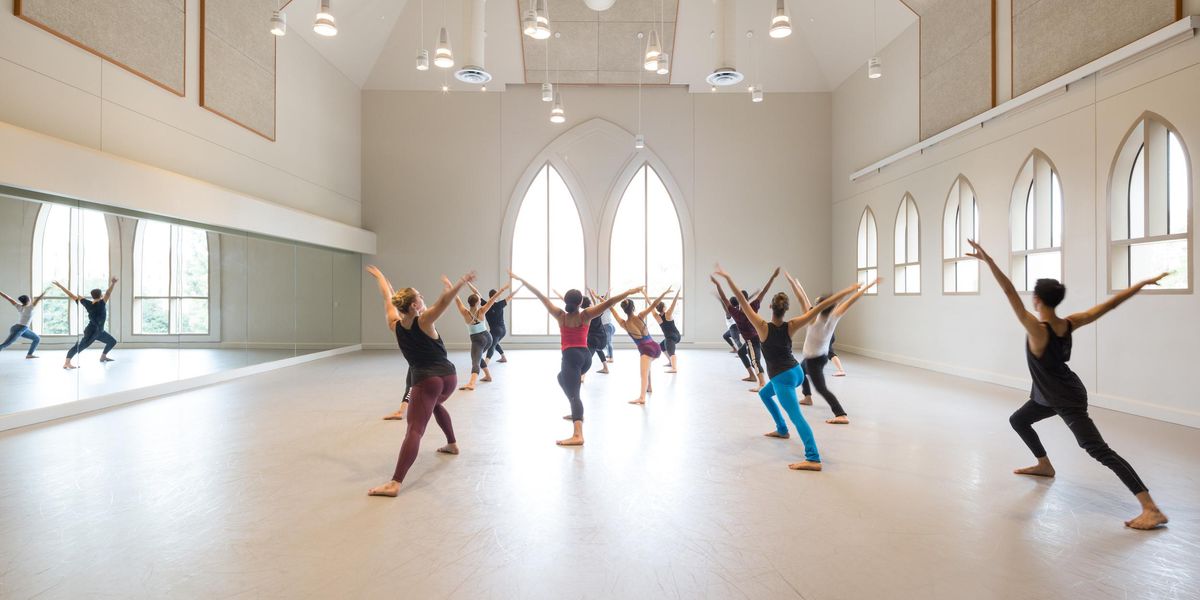The Waiting Game
You’ve been wait-listed to the summer intensive of your dreams. Now what?
Springboard Danse Montréal accepted 45 dancers from its waitlist last year. Photo by Michael Slobodian, courtesy Springboard Danse.
You’ve found the perfect summer program. You audition, and wait weeks for the fated acceptance or rejection letter. An envelope with your dream school’s logo arrives. You excitedly rip it open to find that you’ve been…wait-listed. Your ideal intensive, that just seconds ago seemed within reach, has now slipped away. Or has it?
Few feelings are more frustrating than being placed on the waitlist. What exactly went wrong? Should you follow up or ask for another chance? Or should you make a commitment to your second choice? Ultimately, how you handle yourself while in limbo can make a lasting impression.
A Numbers Game
Most summer programs accept more dancers than they have spots for, knowing that some students will go elsewhere. Waitlists ensure they’re not left with empty barre space. Some programs never touch the waitlist, while others may extend an offer to nearly everyone, and most schools’ dependence on the list changes each year. Lack of space is the number-one reason a qualified dancer is wait-listed. It’s also a spot for dancers that the audition panel feels may not be as strong technically, but they see something special in.
Patel Conservatory in Tampa, Florida, aims to have 300 students attend
its Next Generation Ballet Summer Intensive each year. After seeing more than 600 dancers on a 25-city audition tour (plus year-round Patel students), around 500 dancers are admitted. Seventy to 80 end up on the waitlist. Instead of first come, first served, dancers on Patel’s list are divided by level, then carefully ranked. “We want to make sure each of our levels have relatively even numbers,” says Patel’s dance department manager Claire Florio, who adds that dancers in later audition cities are more likely to be wait-listed if their level is already full. “Auditioning as early as possible certainly can’t hurt.”
Springboard Danse Montréal, a three-week program that connects advanced dancers with choreographers, has to be even more specific when letting dancers off the waitlist—they’re not just filling class levels, but casting performances, too. The program typically has 110 available spots. When one is given up, it needs to be filled with a dancer similar to the original. “If I lose a guy who’s amazing at partnering, I’m not going to replace him with a guy who can’t lift,” says artistic director Alexandra Wells, who pulled 45 dancers, of about 60 total, off the waitlist last year.
Increase Your Chances
Your first instinct when wait-listed may be to ask for another shot. But Alexei Kremnev, artistic director of The Joffrey Academy of Dance in Chicago, says this can only sometimes help sway your odds. “Dancers
can contact our staff and we’ll decide if a reevaluation should be allowed,”
says Kremnev. (Joffrey accepts 6 to 12 dancers from a waitlist of about 120 each year.) “But if you’re given that second chance, make sure you’re ready for it.” Ultimately, re-auditioning is only helpful if something went completely awry the first time, like sickness or injury.
Being wait-listed is not a rejection—it means you’ve already proven you’re a strong dancer. Stay on the program’s radar and let them know they’re still on yours. “The majority of dancers never even respond to our initial email that tells them they’re wait-listed, which is not a good idea,” says Wells, who recommends a response that does more than just state your interest. “We want dancers who have done their research and can explain why our program suits them, instead of someone who says, ‘I’m still free.’ ”
After your first email or call, occasional follow-ups are warranted. “Showing that you’re enthusiastic is always a positive,” Florio says. “With that said, sending an email every day will overwhelm our staff. If we let you know the date you’ll hear back, you don’t need to continue asking about it before then.”
Down to the Wire
You may be forced to put down a deposit for another program before you’ve heard back from your number-one choice. In this case, reach out to your dream program and explain your situation. Patel will let dancers know where they stand on the waitlist. Before agreeing to the other program, ask for a deadline extension, and check the deposit-refund policy. If you do choose another program, it’s a nice gesture to contact your wait-list school and tell them you’d like to remove your name.
Joffrey may continue accepting students from the waitlist up to two weeks after its own registration deadline, which means many dancers will have already chosen other programs. But Kremnev doesn’t recommend backing out once you’ve paid a deposit, since you’re unlikely to get that money back. “Focus on learning as much as you can wherever you end up,” he says, “because any summer program can have a positive impact on your career.”
Wells agrees: “Just tell us, ‘I am so disappointed, but I’ve already agreed to something else.’ If you made it this far, we like you, and you can likely come back to us next year. The dance world is a small family, and we’ll remember a dancer who’s not only talented, but is smart, professional and sticks to her commitments.”




